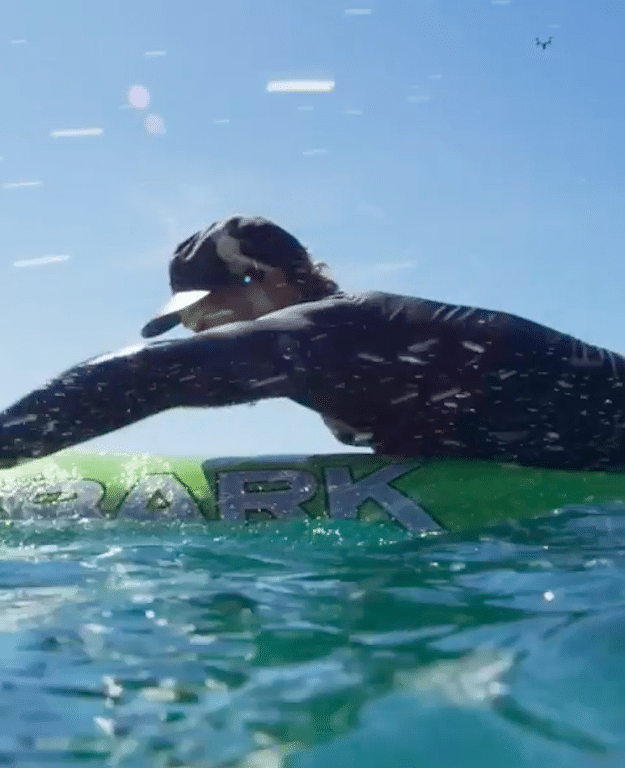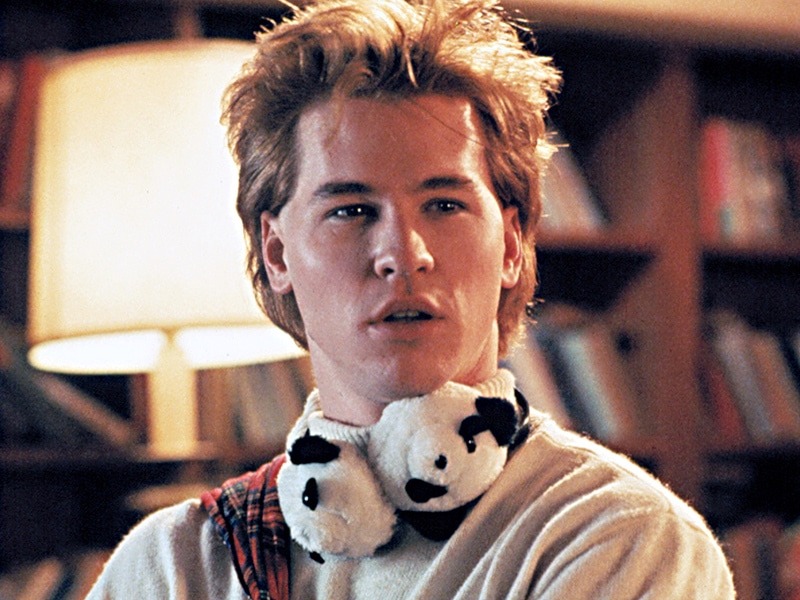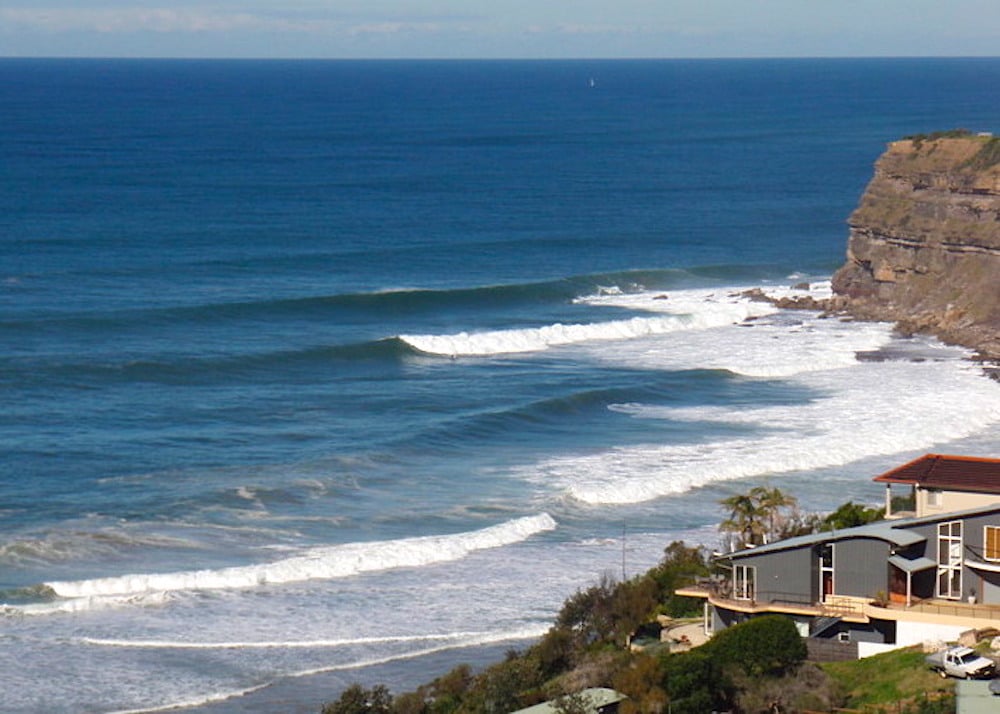Over thirty-five days in the winter of 2007, the noted writer surfed a series of storm events he says he may never see the likes of again…
(Editor’s note: Three days ago, in response to a story by Longtom on the impenetrability of surfing, Nick Carroll commented, “Surfing does grow more and more impenetrable as you do it, over many years, building up a highly personalised history of it for yourself that nobody else can quite grasp, then it suddenly kinda simplifies. Like a light goes on.” I asked Nick when the light went on for him. He replied, July, 2007. This story, below, which details this event, first appeared in an ASL annual in the summer of 2008 and was originally called, Washing off the Layers.)
Too much surf sends my head spinning. It always has. I get excited, run round in circles, forget to wax up then remember when I’m halfway down the beach, and have to run back up to the car. I paddle for the wrong wave and like as not make a complete fucking mess of it. Try as I might, I’ve never quite learned not to rush.
I’m rushing now.
I want to write about this 35 days, June 9 to July 13, 2007, during which I watched and surfed a series of storm events I might never again see at my home beach in my surfing life. I’ve only seen its like once before, that was May and June 1974, that famous 50-year storm that smashed the Cygna up onto Stockton Beach and was followed by swell after massive bombing swell.
But I was a grom then, a little kid who for the most part could only stand on the dunes and watch. Now I’m an adult surfer, with boards we couldn’t dream of back then, and an Internet backdoor into the weather bureau, and years of surfing to draw on, and still June 2007 turned me back into that grommet … except this time I could paddle out and ride.
I knew it was gonna be a special month on the afternoon of June 8, when I got out of a car in a mate’s driveway and heard a tree fall clean onto his neighbour’s rusty old Volvo. It was insanity. We’d just driven back from Sydney in blasting rain and the biggest coldest gale for years. A wicked low pressure had formed very close to the NSW central coast and suddenly intensified. As we’d got closer to home, we’d begun to see stuff flying through the air: building materials, garbage bins, real estate agent for-sale signs, branches of trees. But a whole tree?? What the Fuck? We raced up the driveway and came upon the car and the tree, which had half draped itself across the powerlines. “Don’t walk under there!” my mate yelled to the lady who owned the car. “I’m not stupid,” she retorted, standing right there anyway.
She wasn’t the only one being caught napping. Off Newcastle, the ships who hadn’t paid enough attention to the Bureau were dragging anchors perilously close to the coastline, One of ‘em – just like the Cygna – would end up right on the beach.
The wind absolutely howled all night and all the next day, forming a massive 15-foot storm swell. During April and May, there’d been almost no surf at all, and huge volumes of sand had been nudged up onto the beaches. The storm began tearing away at it, pulling thousands, millions of tonnes off the coast in huge pluming rips, and what the water didn’t take the wind did, blowing it up into big piles along the council dune works and surf club wall. Every time I ducked down the beach to watch another chapter of this furious tale, I’d see little groups of surfers huddled in cars or under trees, just gazing at the elements … we couldn’t surf but we couldn’t stay away either.
Overnight the wind dropped and backed sou-west, and by dawn the air felt eerily quiet. The rest of the household was tucked up asleep while I dragged two six channel AB pintails, a 7’1” and 6’5”, out of the garage. I’d set up to meet the champion paddleboard racers, Mick Porra and Brad Gaul, down at Long Reef to do a paddle north to Palm Beach, but as soon as I saw the ocean I knew that was just out of the question. The surf was too good, too crazy. I got the 7’1” and raced out to south Newport, surfing eight-foot-plus wedges with just one other, a casual goofyfoot. After a while we were joined by three or four more.
Later Porra told me he and Brad had gone for it, and that they’d been catching foaming waves up the coast on their big 12-foot paddleboards, outside all the bombies. Three kilometres off Whale Beach, Mick had fallen off his board; he swam after it but the wind kept flipping it out of his reach. He started thinking “Crap! The board’s history! I’ll have to swim all the way in!” Then Brad came looming up behind him. They doubled up, somehow chased down the errant board, and made it in.
It was that sort of day, just mental.
Back at south Newport, I remembered seeing a big wedging left and right sandbank in front of the surf club, and thought what the hell, I’ll paddle over there and see if I can find one. I got there just in time to meet Dane Burnheim, a young Newy local. Dane was grinning like a madman: “There’s crazy rights out here!” There were, but I was watching the left. This wave would form only occasionally, only as a result of huge easterly storm surf, but when it did, it was a gem. Old Newport local R.J. “Bozo” Windshuttle had written a poem about May 1974, eventually getting it published with the help of the Newport pub. Here’s a stanza from the poem:
The lads at Newport young and old would still remember yet
How the sands from beneath those pines washed out to form a left
It is too fast, it is too quick, and the wind is from the south
It was up to me and Wilbur to be the first to paddle out
A perfect left I’ve never seen at Newport to this day
Quite like the left created when the beaches washed away.
That was way back before anything had happened for any of us at Newy, before the Peak started breaking, before our club Newport Plus, before Derek Hynd mastered the 360 on a single concave twin-fin then got his eye knocked out, before the duels with the old school Bra boys, the Pro Juniors, Fame and Glory, before TC’s world titles, pretending to grow up, marriages, kids, divorces, actually starting to grow up, the fucking lot. In rearranging the beach 33 years ago, the May ‘74 storm had somehow set a stage for everything that’d followed in our witless little surf addicted lives.
Now, as this storm ripped away at sand layers that hadn’t been touched since we were 15 years old, I felt a feral intensity arise, a deepening sense of that wild almost frightening surf lust, that animal sense of a blood contact with the natural world.
Other layers were being torn away too, in places closer to home.
For a month I ran off that feral surf lust, letting the arrival of swells call the tune of things, letting other things fall aside. Instead of meeting notes and work schedules, my diary filled with half-scratched records of wind, tide, and swell, always swell.
June 11 was a long weekend Monday, and the wind swung dead offshore. Perfect four to five foot waves peeled off Bozo’s Bank, ridden by a crowd of 30 or 40. I was my usual frenetic self. What I didn’t know was that for the next month, I wouldn’t have a single surf with more than 10 people in the water.
On Saturday the 16th another huge wind struck. By 10:30am, I stood on Cook’s Terrace hill at Mona Vale and watched 20-foot waves break in immense rip bowls three-quarters of a mile offshore, chaotic and unsurfable. It backed the next day to eight feet and howling sou-west winds.
Then an east swell, and a Monday arvo at Bozo’s Bank again, in heavy strange crossed-up lefts that looked better than they were, that reminded me of grey early 1980s days at Pipeline.
And a Wednesday of slamming six-to-ten foot southeast groundswell and light southwest winds, a spectacular afternoon at the south end with a handful of surfers.
And a freezing Thursday with the swell down to three feet, nobody in the water, and the beach suddenly empty, wild, eroded.
Three days of six-foot southeast swell and light variable westerlies.
A weekend, June 23 and 24, six-to-eight feet, forecast to be bigger but not quite getting there.
Then a dramatic Wednesday and a bombing eight-foot-plus east-north-east groundswell, northerly winds swinging offshore, and three of us riding crazy massive lefts into the centre of the beach, me hypothermic after four hours from a too-thin wetsuit.
And a Friday of fresh southeast swell, but this looking thinner and dropping quickly from an early eight-foot-plus peak. That was June 29.
Four quiet days.
July 6 and a massive astonishing groundswell from the southeast, flaring in massive lines, ten-feet plus. The wind swung offshore in the afternoon and I ran down to the south end alone, not a soul in the water. Four bodyboarders in the shoredump were doing little skimboard backflips. The sand was so eroded now that front yards were beginning to be eaten away; I had to climb over broken fencing to get to the jump-off. Surfed alone for an hour and a half in the vast giant walls and when a few others paddled out, I was glad of the company.
And six days later, another swell.
The swell.
July 12 smashed me to pieces. I still haven’t fully processed this day and all its sensations; maybe I never will. I don’t truly know what happens to peak surf experiences, where they go in your head. They flood your defences, they tear away the layers of civilisation you’ve built up so painfully and carefully, and then they’re over. Or are they.
A big storm had blown off northern NZ. By this time I was wired into the rhythm of this 30-year event. I knew what to expect. Truly nothing else was gonna matter.
I waited for the sun to rise, drove over the hill to a neighbouring beach and saw huge lonely peaks breaking well off the cliff line. The animal surf sense set every nerve twanging like an electric guitar string. Ten minutes later I was running down the track.
The day was perfect, clearest of skies, sunny, light offshore. The beach, normally a gentle curve, now scoured to its rock roots, a cliff of sand suspended over the shoreline, held together by threads of dune grass. Eight-or-ten-foot peaks and walls of water exploding on sand and reef 250 metres offshore with the force of a major groundswell’s first six hours. And nowhere – not on the beach, not on the cliffs, not on the expensive balconies of any of the ridgeline houses – nowhere a human to be seen.
Something about this coastscape, something eerie about that emptiness, slowed my run to a walk. Nothing was wrong and yet it all was. The rip through which I’d planned to gain open water. The slow fall of the lip on that deep cliff-front peak, the bare rock just beyond. The wind and sun on the empty scoured beach. I’d surfed there a thousand times, yet today it felt like nowhere I’d ever been. It felt like a place you could die.
Surf lust has its limits. But I couldn’t walk back up that path.
I jumped into the rip, made it out, and for an hour and a half, I surfed knowing I was at the mercy of this swell; that in my eagerness, I’d walked straight down its throat, and now could only hope it wouldn’t swallow. One stroke or two taken in the wrong direction; a foot wrong on a takeoff; anything, in fact, done with less than utter humility and respect for the ocean and the circumstance, and swallow it would. I was scared from the moment I hit the water, but I also knew this was somehow the Karma of being a lifelong surfer, of the way surfing had begun for me, and that those storm days 33 years ago had launched me like a spear all the way from grommethood into this day, this surf. I felt light as a feather. I caught two waves, rode in on my stomach, touched my forehead to the dry sand.
The eeriness passed, I went home, had a sandwich, then in the afternoon surfed the tip of Newport Reef, my favourite spot in the world, huge and absolutely perfect, by myself. It was fucken sick, crazy. Surfing my spot at that size requires you head out from the back side of the set-up, so the water sucks you out into the bay between the rock pool and the reef. Clambering over the rocks, I found three bodyboards and a surfboard just lying there. Heard a commotion up in the bushes above. Out through a gap in the bushes came Harry Woolvern, one of the young Newy locals, followed by three or four booger mates.
“We went out there,” Harry said, “I got SMASHED.”
Harry’s got the right stuff. I jumped and got out into the open without any trouble other than a slight scrape to the right fin. Paddled through all that open water, totally alone, paddling into empty water, breathing deep, getting a focus. While the water in many places had been dirty and brown thanks to runoff, the reef tip is a long way offshore and clean as can be; it was glowing a deep blue, and you could feel the ocean vibrating. Almost as soon as I paddled into the zone, a twelve-foot set hit off the bombie and stormed through onto the reef. The set stood up square, magnificent and truly terrifying – a deep blue wave face, drawing and sucking clean and way out of my reach. I watched in complete awe as it pitched, roaring like a wild animal.
I surfed waves like that alone for about an hour, taking my time, until a bloke I know, the casual goofyfoot from the morning session a month past, came out and sat a bit wide for a while.
“I’ve got the worst flu!” he said. “I shouldn’t be out here, but…”
We both shrugged, laughing at his “but”.
Next wave was a full-on bomb, and fading back down the face, I was filled not with lust but instead with a glorious sense of everything, the cliffs to the side, the open sky to the northwest, the foam, the deeps and the shallows, the sun lighting it all, the impossibility of it, the impossible beauty of such a day on the rim of a reef and the clean water and the foam line and the feeling of a turn down the face of a 10-foot wave.
Paddled back out and me and the goofyfoot watched as another one of those twelve-foot sets hit. We watched in complete slack-jawed amazement. I thought about my 8’1″ Sunset gun, sitting in the rafters of a mate’s house on Oahu, it coulda caught one of those waves. Maybe I coulda, on the 7’1″, if it was 15 years ago. I said as much to my mate. He said, “Nah, too much side wash.”
Maybe he was right.
I caught a last wave and paddled all the way across to the mid-beach rip next to Bozo’s Bowl, and got a small right to the beach. Almost all of Newport Beach was gone by this time, but still there was a small cliff of sand left facing the rip, a cliff just metres from the council’s dune preservation system, where once, 33 years before, as a grommet, I’d lit fires to warm up after a session. I slid up on a shorebreak foamie, turned, and the next shorie wave came exploding up across the sand and slammed me back against the cliff. I threw my board and let it slam me, laughing.
It’s funny how quick a surf pattern changes, and how final it feels when the change settles in. Only a few weeks later, the middle of August, I wandered into the car park and found a mate checking the surf. It was light offshore and dead flat, as it’d been for some days. The air was unusually warm. We both knew not to expect anything much for a while.
“Just as well for them houses,” my mate said, indicating the south end with a flicker of his eyebrows.
“Yeah, I bet for a while there they were having fucken kittens.”
We sat a bit longer, and my mate said, “Wonder how long it’ll be till that happens again. ’74 last time, jeez we’ll probably be waiting another 35 years!”
Then the thought struck me and him at the same moment, and I couldn’t help laughing at it.
“Fucken hell, next time that happens we’ll be eighty years old! There’s no way we’ll be surfing it … we’ll be sitting on folding chairs watching the grandkiddies! ‘Gooo, little fella! He’s having a dig isn’t he!’”
Those wild storms will come again.
I’ve had two of ‘em.
The first marked my birth as a surfer; the second marked something else – like I said, I still don’t know what.
I count myself lucky for the two.
I wonder if I’ll be lucky enough to see a third, and if so, what those storms will bring.





